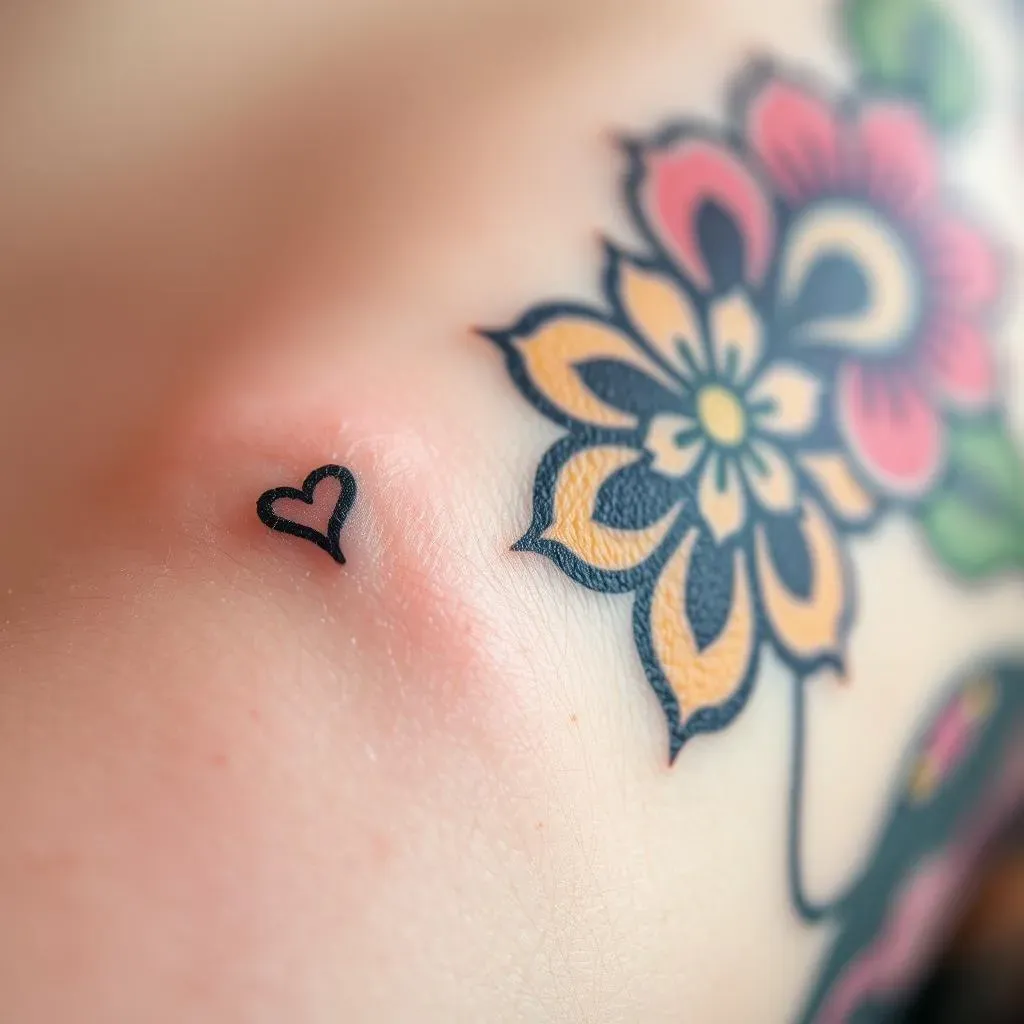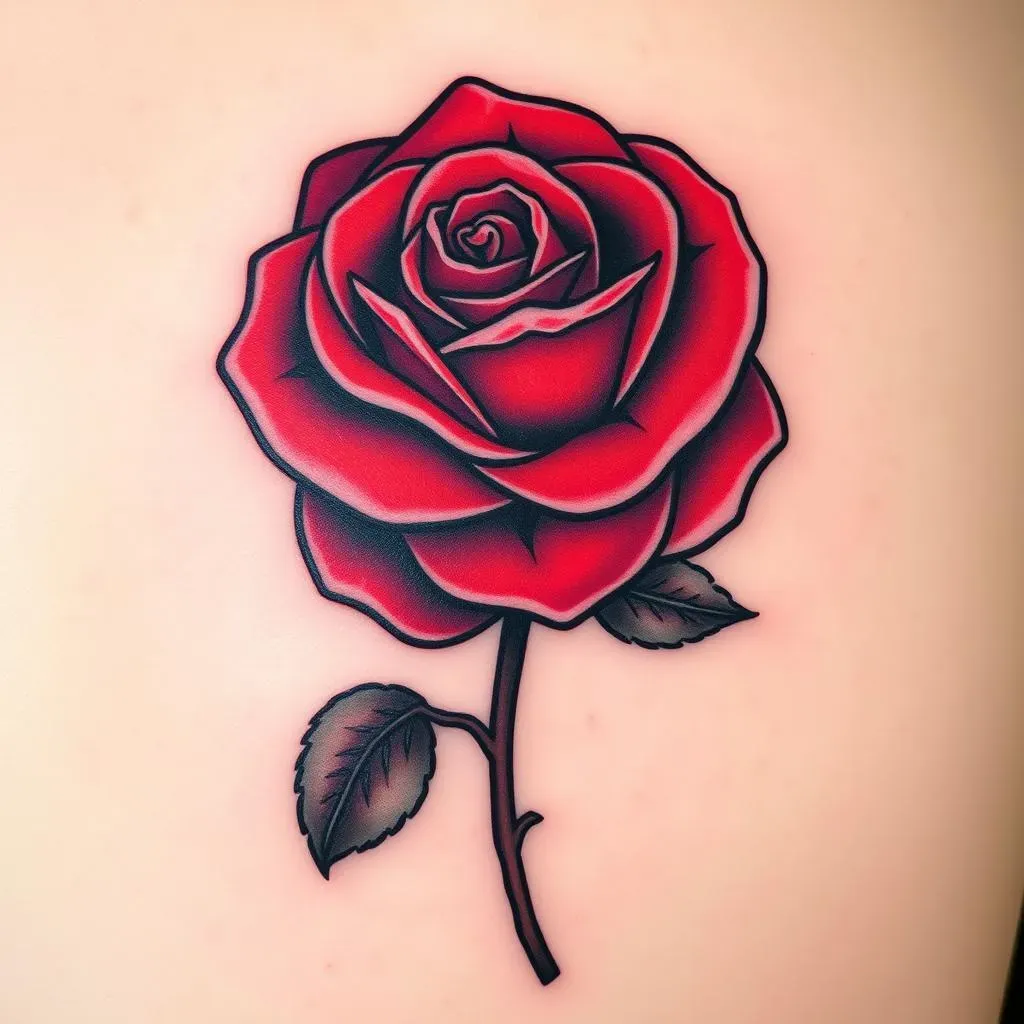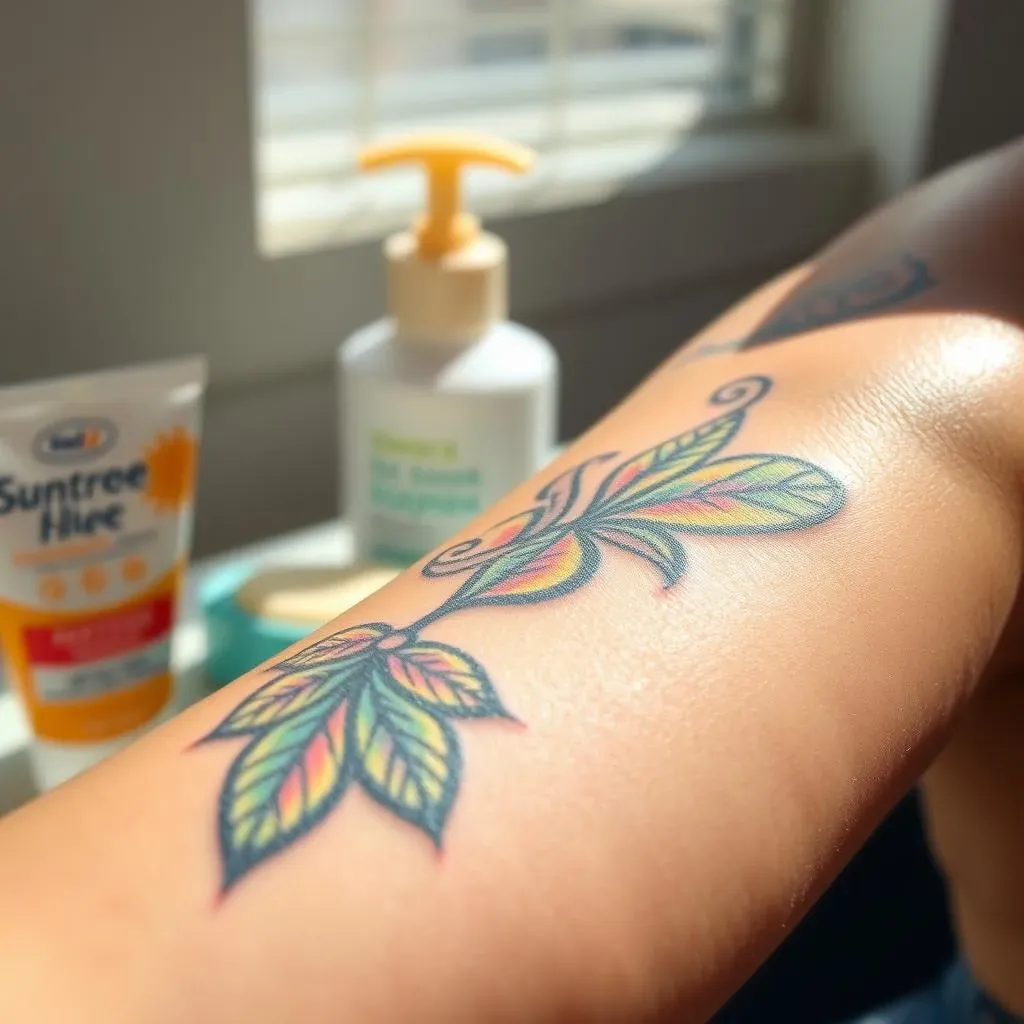Table of Contents
Got a tattoo you regret? You're not alone. Many people find themselves wanting to erase or transform ink they once loved. That's where tattoo designs cover up come in. This article is your guide to navigating the world of cover-up tattoos, from understanding the basics to exploring creative design options. We'll delve into what makes a successful cover-up, offering practical tips for choosing the right artist and ensuring your new tattoo looks amazing for years to come. Ready to turn that unwanted artwork into something you'll be proud to show off? We'll walk you through the key considerations, including how to assess your existing tattoo, explore design possibilities that effectively conceal the old ink, and understand the importance of selecting an experienced artist who specializes in cover-ups. Plus, we'll cover essential aftercare practices to keep your tattoo looking its best. Let's dive in and discover how you can achieve a stunning transformation with the right tattoo cover-up!
Understanding Tattoo CoverUps: What You Need to Know
Understanding Tattoo CoverUps: What You Need to Know
Why Cover Up? Reasons and Considerations
So, you're thinking about a tattoo cover-up. Maybe that impulsive decision from your youth doesn't quite fit your current aesthetic, or perhaps the artwork simply didn't age well. Whatever the reason, it's a common situation. Understanding tattoo cover-ups starts with acknowledging why you want the change. Is it purely aesthetic? Are there emotional reasons tied to the original tattoo? Identifying your motivation is the first step in ensuring a satisfying outcome.
Before diving into designs, take a good, hard look at your existing tattoo. Consider its size, color, and placement. Darker inks, especially black and deep blues, are notoriously harder to cover than lighter colors. The size of the existing tattoo will also influence the size and complexity of your cover-up. Placement matters too; a tattoo on your ribs will react differently to ink than one on your forearm. All these factors will play a role in what's realistically achievable.
Assessing Your Existing Tattoo
let's get real about what you're working with. Not all tattoos are created equal, and some are definitely easier to cover than others. Think of your existing tattoo as the foundation for your new artwork. A faded, light-colored tattoo offers a blank canvas, while a bold, dark piece presents more of a challenge. That doesn't mean it's impossible, just that you need to be realistic about your options. The key is to find an artist who can work with the existing ink, not against it.
Consider the age of the tattoo. Older tattoos tend to fade, making them easier to cover. Newer tattoos, with their saturated colors, require more strategic planning. Also, think about the texture of the skin. Scarring from the original tattoo can affect how the new ink is absorbed, potentially limiting your design choices. Be prepared to discuss all these factors openly with your chosen artist. Honesty and realistic expectations are crucial for a successful tattoo cover-up journey.
Factor | Considerations |
|---|---|
Ink Color | Darker colors (black, blue) are harder to cover. |
Tattoo Size | Larger tattoos require larger cover-up designs. |
Tattoo Age | Older, faded tattoos are easier to work with. |
Skin Texture | Scarring can affect ink absorption. |
Creative Tattoo Designs for Effective CoverUps
Creative Tattoo Designs for Effective CoverUps
Leveraging Boldness and Darkness
When it comes to creative tattoo designs for effective cover-ups, embracing boldness is often the best approach. Think about it: a delicate, fine-line design is unlikely to hide a large, dark tattoo. Instead, opt for designs with strong outlines and plenty of shading. Traditional tattoos, with their bold lines and solid colors, are a classic choice for cover-ups. Neo-traditional styles, which incorporate more detail and depth, can also be highly effective. The key is to choose a design that's visually dominant and capable of drawing the eye away from the original tattoo.
Darkness is your friend. While it might seem counterintuitive, using darker inks strategically can be incredibly successful in concealing unwanted tattoos. Blackwork, which involves using solid black ink to create striking designs, is a popular option. However, it's not the only way to incorporate darkness. Rich, deep colors like navy blue, deep purple, and forest green can also provide excellent coverage. Discuss your color options with your artist, and don't be afraid to embrace the darker side.
Nature-Inspired Cover-Up Designs
Nature provides endless inspiration for creative tattoo designs that work wonders as cover-ups. Floral designs, with their intricate details and varying shades, are a fantastic choice. A large rose, for example, can effectively conceal a smaller tattoo, while a sprawling vine can cover a larger area. Animals, too, offer a wealth of possibilities. A majestic lion, a powerful dragon, or a graceful phoenix can all be adapted to cover existing ink.
Consider the symbolism of your chosen design. A lotus flower, for instance, represents rebirth and transformation, making it a meaningful choice for a cover-up. A koi fish symbolizes perseverance and strength, while a butterfly represents change and beauty. Choosing a design with personal significance can add an extra layer of meaning to your new tattoo. Remember, a cover-up is not just about hiding the old; it's about creating something new and meaningful.
Design Element | Examples | Cover-Up Potential |
|---|---|---|
Flowers | Roses, peonies, sunflowers | Excellent for concealing smaller tattoos with intricate detail. |
Animals | Lions, wolves, dragons | Ideal for larger cover-ups, offering powerful imagery. |
Landscapes | Mountains, forests, oceans | Suitable for covering large areas with varying shades. |
Abstract and Geometric Approaches
For those seeking a more modern and unconventional approach, abstract and geometric designs can be surprisingly effective as tattoo designs cover up. These styles rely on shapes, lines, and patterns to create visually striking pieces that distract the eye from the underlying tattoo. Abstract designs, in particular, offer a lot of freedom, allowing the artist to incorporate the existing ink into the new artwork in creative ways. Geometric patterns, such as mandalas or tessellations, can also provide excellent coverage, especially for tattoos with irregular shapes.
The key to a successful abstract or geometric cover-up is to work with an artist who is skilled in these styles. They will be able to create a design that is both visually appealing and strategically effective in concealing the old tattoo. Don't be afraid to experiment with different colors and textures to add depth and dimension to your design. With the right approach, an abstract or geometric cover-up can be a true work of art.
Choosing the Right Artist for Your Tattoo CoverUp
Choosing the Right Artist for Your Tattoo CoverUp
Portfolio Power: Spotting a Cover-Up Pro
so you've got your design ideas brewing. Now comes the crucial part: choosing the right artist for your tattoo cover-up. This isn't just about finding someone who can ink; it's about finding a true artist with experience and a portfolio that screams "cover-up master." Start by hitting up local shops or browsing online. Most artists have online portfolios showcasing their best work. When you're looking at portfolios, don't just skim. Really dig in.
Pay close attention to before-and-after photos of cover-ups. Can you tell there was a tattoo underneath? A skilled artist will seamlessly blend the old with the new, making it nearly impossible to detect the original design. Look for artists who have experience covering tattoos similar in size, color, and complexity to yours. If you have a large, dark tribal tattoo, find an artist who has successfully covered similar pieces. Don't be afraid to ask questions about their experience and techniques. A good artist will be happy to discuss their process and address any concerns you may have.
Consultation is Key: Discussing Your Vision
Once you've identified a few potential artists, schedule consultations. This is your chance to meet them in person, discuss your ideas, and get their professional opinion. A consultation is a two-way street. The artist will assess your existing tattoo, discuss design possibilities, and explain any limitations. You'll have the opportunity to ask questions, express your concerns, and get a feel for their artistic style and personality.
During the consultation, be prepared to discuss your design ideas in detail. Bring reference photos, sketches, or anything else that helps illustrate your vision. Be open to the artist's suggestions, but don't be afraid to voice your preferences. Remember, this is your tattoo, and you want to be happy with the final result. A good artist will collaborate with you to create a design that is both visually stunning and effectively covers the old tattoo. Trust your gut. If you don't feel comfortable with an artist, move on. Finding the right artist is worth the effort.
Factor | Considerations |
|---|---|
Portfolio Review | Look for before-and-after cover-up photos. |
Consultation | Discuss design ideas and artist's suggestions. |
Communication | Ensure open and honest dialogue with the artist. |
Gut Feeling | Trust your instincts and choose an artist you feel comfortable with. |
Aftercare and LongTerm Maintenance of Your CoverUp Tattoo
Aftercare and LongTerm Maintenance of Your CoverUp Tattoo
The Golden Rules of Initial Aftercare
Congrats, you've got your awesome tattoo designs cover up! But the journey doesn't end in the tattoo chair. Proper aftercare is crucial to ensure your cover-up heals beautifully and the colors stay vibrant. Think of your new tattoo as an open wound (because, well, it is!). Follow your artist's instructions to the letter. Generally, this involves keeping the tattoo clean and moisturized.
Typically, you'll remove the bandage after a few hours and gently wash the area with mild soap and water. Pat it dry with a clean paper towel (avoid terry cloth, which can harbor bacteria). Then, apply a thin layer of fragrance-free, hypoallergenic moisturizer. Repeat this process several times a day for the first few weeks. Avoid picking at scabs (as tempting as it may be!). Let them fall off naturally to prevent scarring and ink loss. Remember, patience is key. A little extra care now will pay off big time in the long run.
Sun Protection and Long-Term Vibrancy
Once your tattoo designs cover up is fully healed, the work isn't over. Sun protection is paramount. UV rays can fade your tattoo's colors over time, turning that vibrant artwork into a dull shadow of its former self. Apply a high-SPF sunscreen (30 or higher) to your tattoo whenever it's exposed to the sun. Clothing can also provide protection, but remember that thin fabrics may not block all UV rays.
Moisturizing regularly is also essential for long-term vibrancy. Dry skin can make your tattoo look dull and faded. Keep your skin hydrated by applying a moisturizer daily, especially after showering. Avoid harsh soaps and scrubs that can irritate the skin and damage the tattoo. With proper care and maintenance, your cover-up tattoo can look amazing for years to come. Think of it as a partnership between you and your artist – they created the masterpiece, and it's your job to keep it looking its best.
Aftercare Aspect | Recommendations |
|---|---|
Cleaning | Wash gently with mild soap and water. |
Moisturizing | Apply fragrance-free, hypoallergenic lotion. |
Sun Protection | Use high-SPF sunscreen or protective clothing. |
Long-Term Care | Moisturize daily and avoid harsh products. |
Embrace Your Transformation with Confidence
Choosing to get a tattoo designs cover up is a significant decision, but with the right knowledge and preparation, it can be an incredibly rewarding experience. Remember to carefully consider your design options, choose a skilled artist who understands the nuances of cover-up work, and follow proper aftercare instructions. By taking these steps, you can transform unwanted ink into a beautiful piece of art that you'll be proud to wear. So, go ahead and embrace the opportunity to rewrite your skin story and express yourself with confidence!